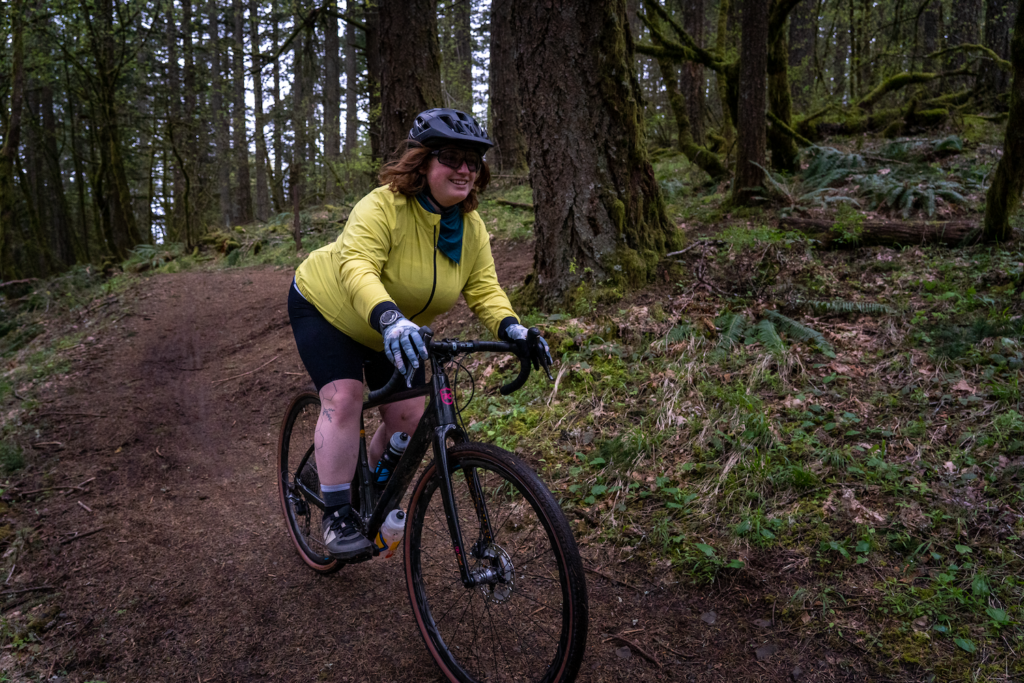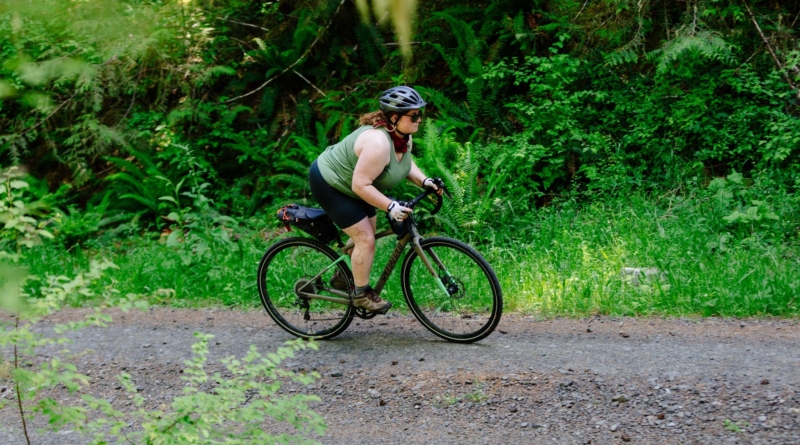How I Embrace Cycling as a Plus-Size Rider
KAILEY KORNHAUSER shares her journey: “Finding joy in uphill rides, even with a smile!”
THE CYCLING WORLD NEEDS TO SHIFT ITS VIEW ON DIVERSITY, NOT MY BODY SIZE.
Sitting in a parking lot, munching on oatmeal, my friend and I braced ourselves for the upcoming challenge. We were mid-journey on our bikepacking adventure from Seward to Deadhorse, Alaska. Ahead of us lay the Dalton Highway – a daunting path with 27,976 feet of elevation gain across 500 miles of gravel. As we sorted our slightly wet equipment, a tour van stopped nearby. Its guide pointed us out to his passengers, commenting on the rarity of cyclists conquering the Dalton, especially after he’d seen two fit (read: skinny) guys struggle to complete it. His words echoed in my mind. He equated fitness with thinness.
Let’s be clear: I’m a plus-size cyclist. My wardrobe fluctuates from XL to XXL (sizes 18-22). Initially, I feared the cycling world wouldn’t cater to my size. Surprisingly, brands like Pearl iZumi, De Marchi, and Terry offer up to XXL for women’s cycling gear. However, the issue isn’t just about clothing sizes.

The real challenge lies in our societal perceptions of sports and athleticism. It’s about who exercises for pleasure and who feels obliged to do so for physical change.
In mainstream cycling imagery, larger-bodied cyclists are virtually invisible. We’re missing from bike event promotions, cycling product ads, and social media posts.
When plus-size athletes do appear in sports media, it’s often within the context of weight loss narratives. But my goal isn’t weight loss. I’ve pedaled thousands of miles in my plus-size body – through Iowa, Utah, Oregon, and Alaska. I’ve tackled mountains and rainforests, all while clad in form-fitting spandex.
This lack of representation has profound effects. If fat cyclists are not seen, two things occur: fat individuals don’t envision themselves as cyclists, so they don’t ride; and the cycling community fails to recognize a plus-size cyclist as a legitimate athlete. This leads to fewer people embracing cycling.
3 Shorts That Come in Size XXL
The cycling community has an opportunity to change. Bicycling is an accessible way for many people of all sizes to move their bodies if the space is created. What if we began to see images of fat cyclists riding alongside thin friends, or groups of fat people riding together enjoying their bodies just as they are now? What would it look like to include fat cyclists in films about biking or for companies to bring in fat cyclists to create gear that works for their bodies? Fat people are doing this work across sports already.

Fat hikers have built community and continue to influence brands like REI to provide more clothing sizes. Fat runners are beginning to appear in magazines as experts in their sport. Fat cyclists are writing about their experiences and sharing stories in spaces like the Womxn, Trans, Femme (WTF) Bikexplorers Summit. But a cultural shift requires that all people, not just fat people, accept that our idea of athleticism is flawed. My fat body began to surprise me the moment I approached biking as a lifestyle.
I am an athlete now, not in some alternative thin body.
I am an athlete now, not in some alternative thin body. After the tour guide packed up his van and headed north, another van pulled into the parking lot. This time a female tour guide popped out of the van and excitedly explained to her tourists that we would be biking the very route they were taking to the Arctic Circle. She told us how thrilled she was for us, handed us a sleeve of powdered donuts, and drove away. Upon finishing the donuts, we began the ride north.



